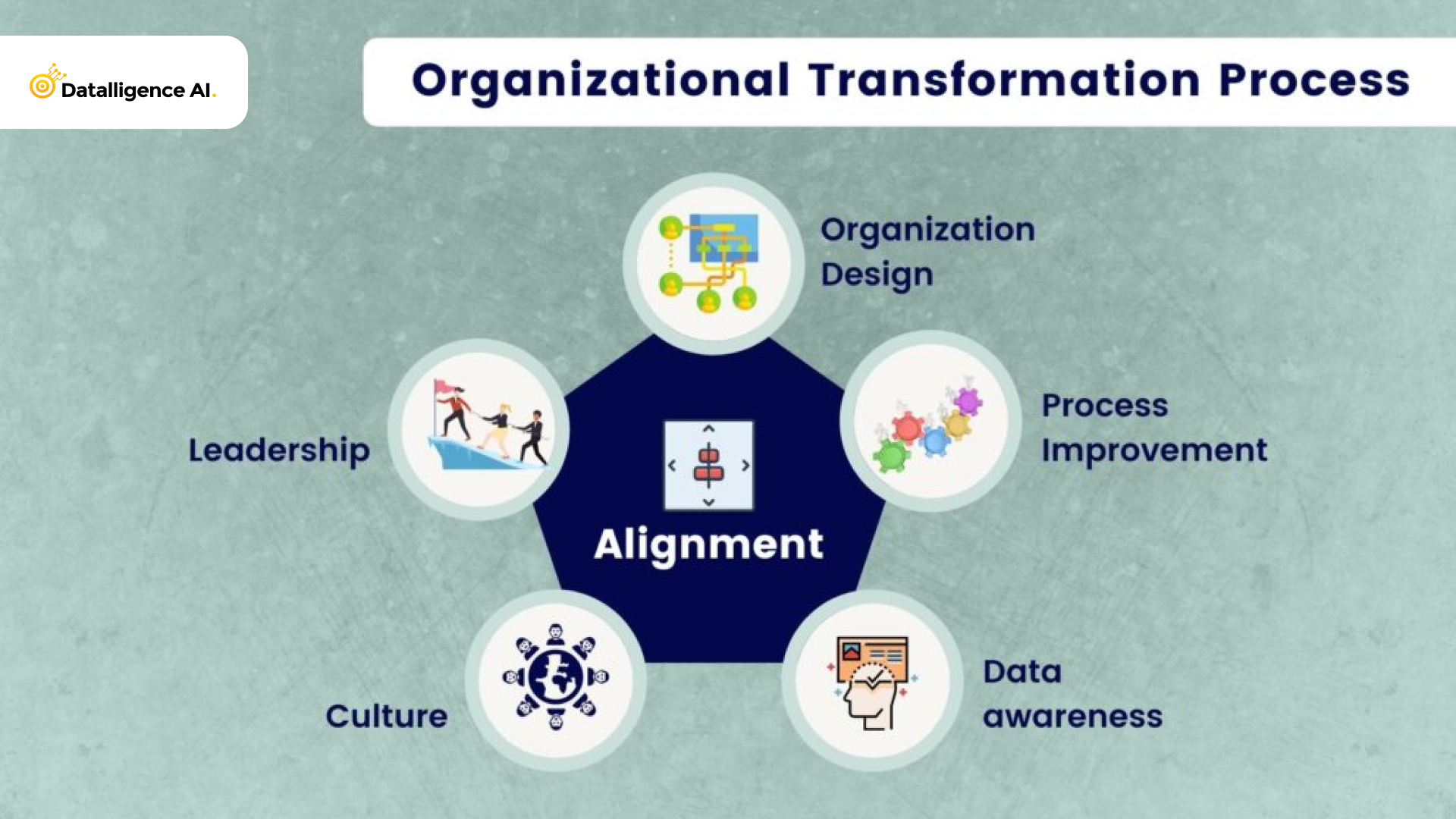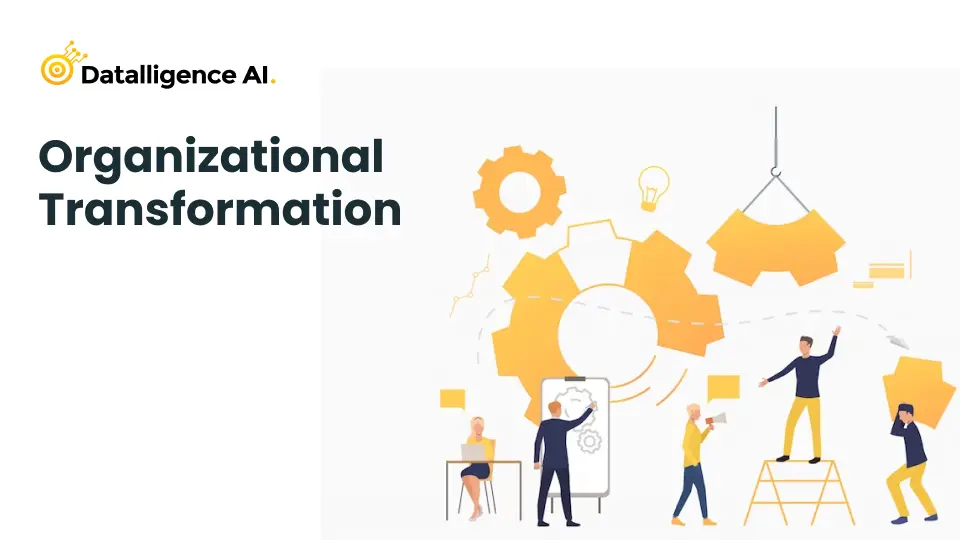Humans develop and upgrade themselves through evolution while situations change and set the stage for transformation. This is simply the way organizations also function. We should bear in mind that over years these terms are easily spoken rarely delivered and more easily forgotten midway through the journey.
Organizational transformation is a mindset that needs to be translated which is the most common challenge for many business leaders. Smart managers are always looking for opportunities to increase their organizational effectiveness and strengthen their company’s culture. This effort is especially critical in times of change like what we have experienced last year as a result of the pandemic. It’s also where organizational transformation becomes the factor for longevity.
At the juncture between organizational sluggishness and sustainability, organizational transformation strategies can provide continuity and opportunity to your business. Most of the transformation affects your most sensitive resource – your Employees. Here is where HRs have an imperative role to play and contribute to organizational transformation success!
What and why is organizational transformation important? How to go through this process? What is the role of Business and HR leaders in this process? Read along to find your answers.
What is organizational transformation?
“Organizational transformation is the process of transforming and changing the existing corporate culture to achieve a competitive advantage or address a significant challenge” – by anonymous.
It typically involves most of the people in the organization and has the potential to refocus and reenergize the entire workforce. Transforming an organization requires the ability to be agile and responsive to industry, technology, and workforce trends and pivot when necessary. The organization’s culture must be adaptable to get everyone from where they are to where they want to be while embracing core values that make it unique. In today’s scenario, the digital transformation includes keeping up with and being at the forefront of technological developments. Organizational transformation must align with the business goals and also enable changing the workflows, making them more agile, adaptable and hence effective.
Why is organizational transformation essential?
It is natural for life to evolve and organizations have a life too. It is important that organizations have their checks and balances and have an agile culture to adapt to the changing and emerging advancements in the industry. Any organization initially is an idea that takes birth and forms an organization and then evolves into a big giant. This doesn’t happen overnight because it is a process and includes the efforts of many people. Through this journey, organizations that grow into known brands, bigger numbered organizations and have unique USP will definitely have organizational transformation as an integral part of their DNA. Simply said – If we do not transform to evolve organizations will set themselves up to fail and become extinct.
A few key areas while transformation is devised include – organization’s productivity or performance improvement, culture, market visibility and impact, competitive advantage, and change management in the organization.
Organizational Transformation Process

We understand from Kurt Lewin’s model of organizational transformation, there are 3 stages – Unfreeze, change and refreeze.
1. Unfreezing
This is the first step where the organization leaders identify the need for change and create the perception throughout the organization change is needed in order to improve the organization.
This occurs in two ways: (1) Recognizing the need, and (2) Encouraging new behaviours to replace old ways of doing things.
The HRs are crucial for identifying and sharing data indicators of transformational need. For example, low employee satisfaction and high turnover might signify a need for culture transformation. When supported by management, this drives change based on profitability and productivity.
2. Changing
Once the need is identified along with new behaviours to replace the old ones, the organization moves past any objections towards transformation. New desired behaviours replace old undesired behaviours. Human resources have a significant role in maintaining clarity, communicating change, and managing any resistance.
During transformation, changes happen in the hierarchical structures. There is also leadership changes witnessed. A specific change action takes place with role models, experts, and mentors in the organization who lead by example for the rest of the organization. Training to adapt for the newness happens in this stage encouraging everyone to learn new concepts and step into the future.
3. Refreezing
Once the changes have stabilized and are accepted as the new norm, the organizational transformation process is complete. The entire organization integrates changes in behaviour with a new set of values and expectations. In this phase, HRs only need to manage and support employees navigate through roadblocks if any. Time and again sharing awareness by way of mailers will keep the message intact and fresh in the memory of the employees.
The role of Business and HR leaders in this process is extremely important. This is not a step in the process but the driver of this transformational process.
Leaders are required to have a clear vision and set goals for this change. While it is important to understand the purpose of this transformation, it becomes even more important to have the communication simple and clear for the entire organization to understand. Transformation is holistic and cannot exist in a silo. It must address multiple areas of business.
Once the approach is known, it is then time to have a strategy and plan in place, followed by prioritizing to address the burning issues at hand along the way till the least important issue is addressed. Transformation as a process is successful when all stakeholders involved and impacted give their consent. Hence it is important for HRs to get consent from all stakeholders and communicate the benefits to all the stakeholders clearly.
Then comes the part of leadership where through the process, if there is a need to change the plan then the decision making should happen and need not wait till the end of the change is completed.
Throughout the process, it is necessary to measure the progress. It is also very crucial to course-correct considering the changes in employees’ experience, performance and productivity. Through transformation, organizations need to ensure it is leading to a high-performance culture.
To summarize, organizational transformation leads to a high-performance culture. That’s another reason why organizations should break the bigger goal into smaller increments, set goals and have a clear vision along with focus being intact on their employees.
We at Datalligence.ai support organizations with our solutions on performance management systems and also are consulting partners to most of our clients. Feel free to browse our products session to have a glimpse of what we offer.
Reach out to us at www.datalligence.ai or write to us at connect@datalligence.ai to implement OKR based performance management.










